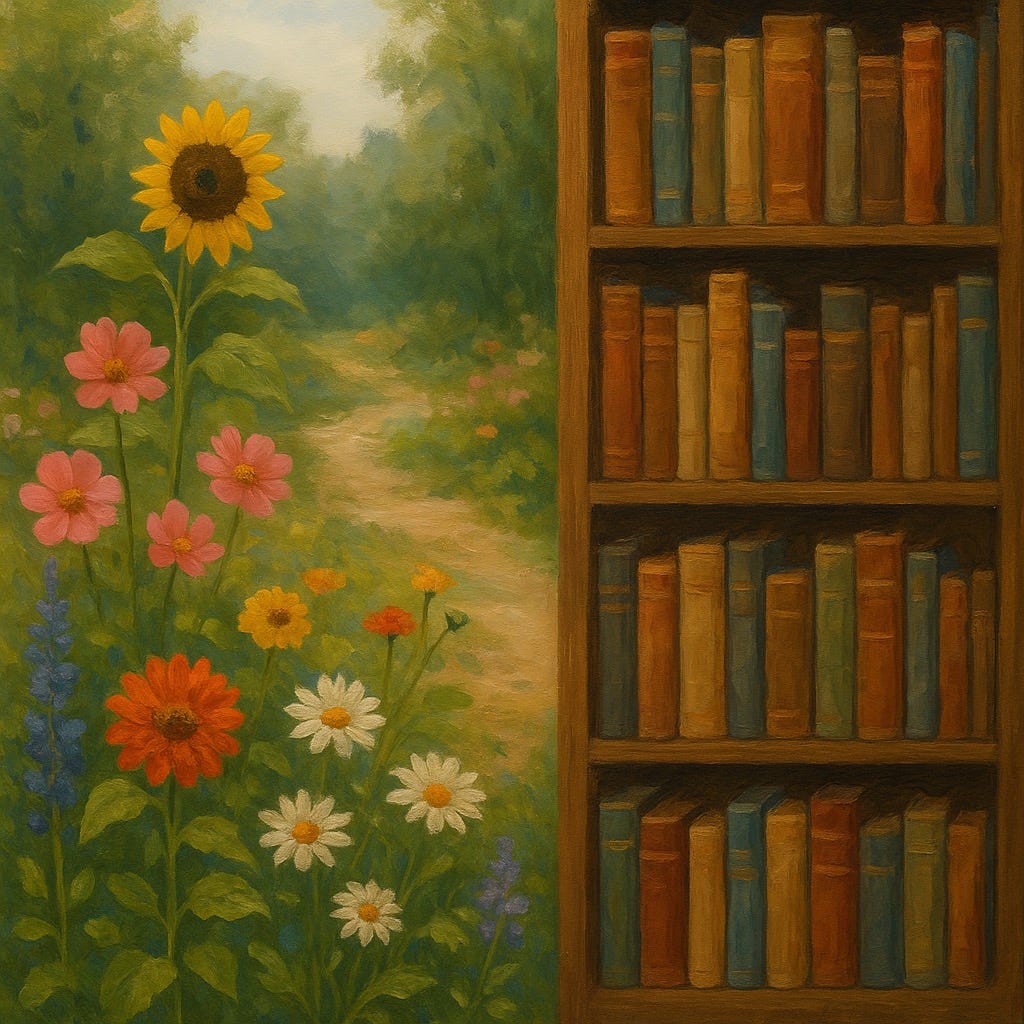Growing Past the "Right vs. Wrong" Narative
We’ve been taught the difference between right and wrong. We’ve learned how to name it. Defend it. Teach it to our children. Shape our decisions around it. And that’s important. Knowing right from wrong is the foundation of justice, of safety, of order in a world that can feel chaotic.
But what comes next?
What do we do when someone shares their truth, and it doesn’t match our own? What happens when someone describes pain in a place we found healing? Or names harm in a space we once called home?
Too often, we treat their story like a threat. Like the existence of their pain somehow invalidates the goodness we experienced. And so we push back; not out of cruelty, but out of fear. We say things like:
“That wasn’t my experience.”
“I never saw it that way.”
“Are you sure that’s what really happened?”
Not to silence them, maybe. But to protect our own sense of safety. Our own truth. And yet . . . both can be true.
We Were Taught Right and Wrong—And That Was a Beginning, Not the End
Many of us were raised with a clear framework: good vs. bad, right vs. wrong, truth vs. error. This duality shows up everywhere—from the rules of childhood to the stories we loved growing up. And not just in school or religion, but in nearly every book, film, and fairy tale we consumed. We were taught to cheer for the hero, to boo the villain. We learned to see good as pure and evil as corrupt. And we watched, again and again, as good triumphed over evil.
And honestly? I still love those stories. I love a good fairy tale. I love classic retellings where right wins in the end, and wrong is vanquished. But what I’ve come to love even more… Is the growth of the hero or heroine in the process. The internal journey. The lessons learned. The shedding of old identities.
Because that’s where the real story is. It’s not just about winning; it’s about becoming. And in real life, becoming doesn’t always come with a clear villain or a guaranteed victory. It comes through listening, through wrestling with discomfort, and through making space for the messy, beautiful complexity of human experience.
Someone Else’s Story Doesn’t Erase Yours
It’s deeply human to want to defend our experience. But the truth is that someone else’s trauma doesn’t rewrite your joy. Their heartbreak doesn’t erase your healing. When we say “that wasn’t my experience,” we’re not wrong.
But if we stop there, we miss the invitation: to listen. To learn. To expand our view. Holding space doesn’t mean agreeing with everything. It doesn’t mean abandoning your truth or co-signing something you believe is harmful. It means making room. It means saying, “I hear you.” It means trusting that your truth is strong enough to coexist with someone else’s.
Think of it like a garden. A thriving garden isn’t made of one kind of flower over and over again. It’s a blend of colors, textures, scents, and growth patterns. Some bloom early. Some take time. Some need more shade. Some thrive in full sun. Every flower has a place. And none of them diminish the beauty of the others by simply existing.
Another way to illustrate this concept is that of a library. Imagine walking into a grand library, only to find a single book repeated on every shelf. Same cover. Same title. Same story, again and again. What would be the point? The richness of a library comes from its diversity—biographies beside poetry, memoir beside fantasy, pain beside joy. It is the coexistence of many stories, side by side, that gives the library its purpose. And it is the same with us. We are not meant to be echoes of one another. We are meant to be volumes on the shelf of a collective story.
“Mourning With Those Who Mourn”
I think this is what it really means to ”mourn with those that mourn”. It’s not about adopting someone else’s grief as your own or collapsing under the weight of their sorrow. It’s about showing up and offering presence, compassion, and empathy without needing to fix or fully understand. It’s about HoLdInG SpAcE for their pain, while still standing in your own. Their grief doesn’t have to become mine in order for it to matter to me. I don’t have to match their tears for my comfort to mean something. I can honor their sorrow without sacrificing my peace. And sometimes, that is the most sacred offering of all, being with someone in their pain, without needing to pull them out of it or drag yourself in.
Holding Space Is the Next Step of Maturity
There’s a difference between “living in truth” and “demanding uniformity”. When we hold space, we release the pressure to fix, defend, or compare. We stop trying to sort experiences into right/wrong, better/worse. We let people be where they are. We let ourselves be where we are. And we trust that truth can be multifaceted without losing integrity. It’s not always comfortable. But it is often transformational.
Why It Matters
We cannot build bridges while tearing down someone else’s story. We cannot create healing spaces if only certain kinds of pain are allowed. We cannot grow, individually or collectively, if we only make room for experiences that mirror our own.
----------
The next time you feel the urge to say, “That wasn’t my experience,” pause. Ask yourself: “Is this a moment to correct? Or a moment to connect?” And maybe, instead of retreating into the safety of certainty, you can open the door to empathy. You can say, “That’s not how I experienced it—but I believe you. I’m listening.” Because your story matters. And so does theirs. And there is enough room for both.
I see you. I hear you. This is a safe space.



